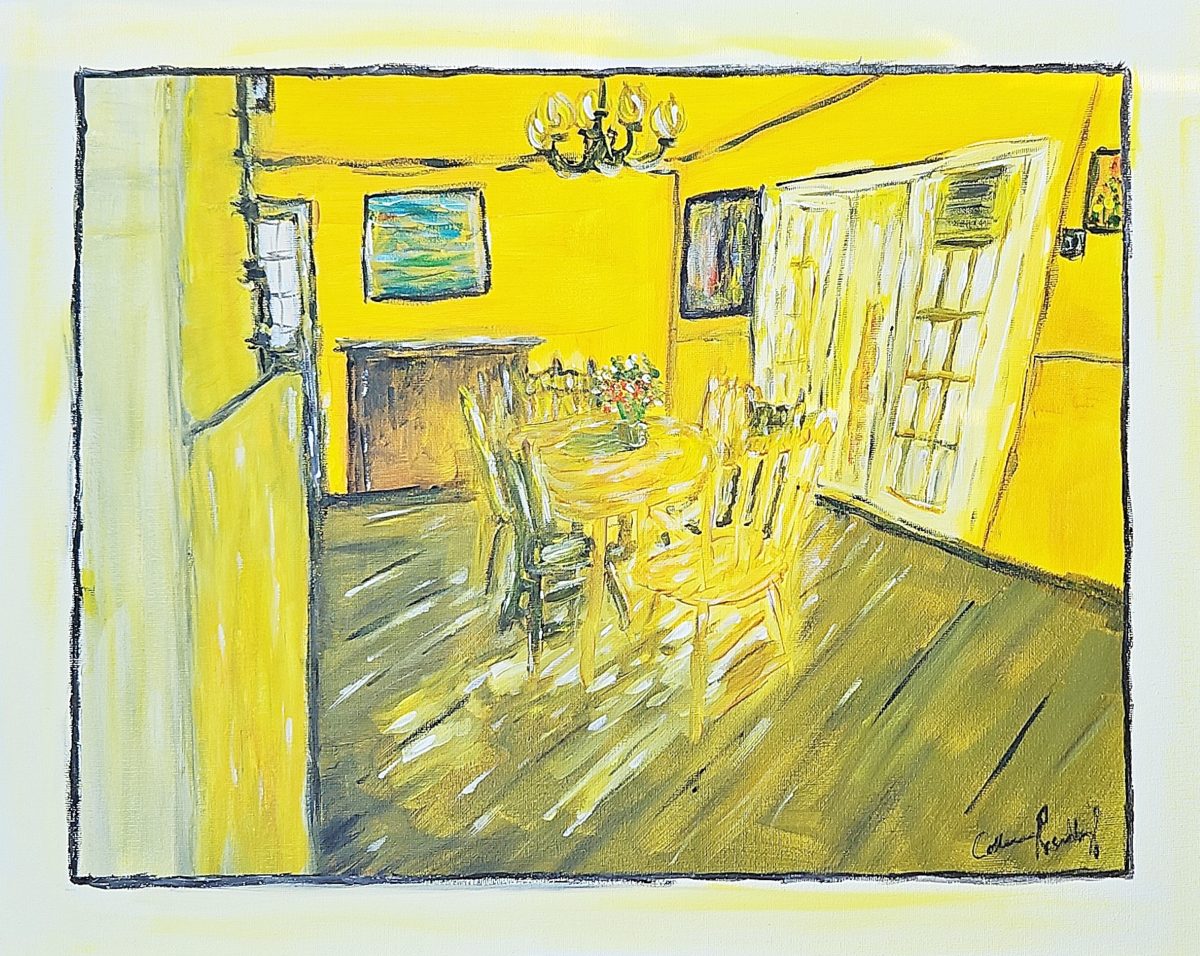Following the sudden death of her youngest son, Colleen Rosenberry revived a painting practice she had cultivated in her youth but that she had let wane as the responsibilities of motherhood and work mounted. Seeking solace in her grief, Rosenberry turned to artistic expression.
In the gallery at Studio Ix, Rosenberry presents “Journey From Grief To Art,” a collection of paintings with subjects including landscapes, interior settings, cityscapes, and architectural studies. The show is unified by the connecting threads of loss, memory, and peace, as well as the impressionistic style employed by the artist, who cites Monet and Van Gogh as inspirations.
The scene set in “Breath” evokes a vigil, with a single light burning in remembrance of a pictured subject. We see the outline of an empty chair, vignetted by lamp light. There is warmth, but it only extends so far. The painting holds a second vignette, as this interior scene is couched within a view of the cosmos. Here, we gain the sense of how a small slice of life fits into the greater design of existence. At 14 by 12 inches, the size of the painting is intimate, pulling the viewer to look closer, drawing one into the scene.

“Guide into the Blooms” reinforces the notion of light as a beacon. A single lamp hanging from a shepherd’s crook stand drives home the idea of guiding and tending, but behind the lamp, the viewer is drawn into an overwhelming sea of flora. Tension is built between the tight, flat rendering of the lamppost against the loose and impressionistic flowers that fill the picture plane.
A third piece trafficking in the theme of illumination, “Welcome into the Light,” offers a warmer composition dominated by yellow hues. There is warmth, but also an air of absence. The room is lit and inviting, but the table is empty; there are no dishes or silverware, no remnants of a meal or game of cards, just a solitary vase of flowers. The chair at the head of the table glows, perhaps alluding to a privileged position that will remain unfilled.
Together, these three works adeptly convey the presence of absence, where we see the trappings of habituation, but the inhabitants are nowhere to be found.
Other works in “Journey From Grief To Art” feature water and bridges, symbols of cleansing and “crossing over.” Still others focus on sunrises and sunsets, periods of transition and rebirth within a cycle of brilliance and darkness. Taken together, this collection of paintings is a strong illustration of the exhibition title, where raw emotion gives way to aesthetic understanding.
